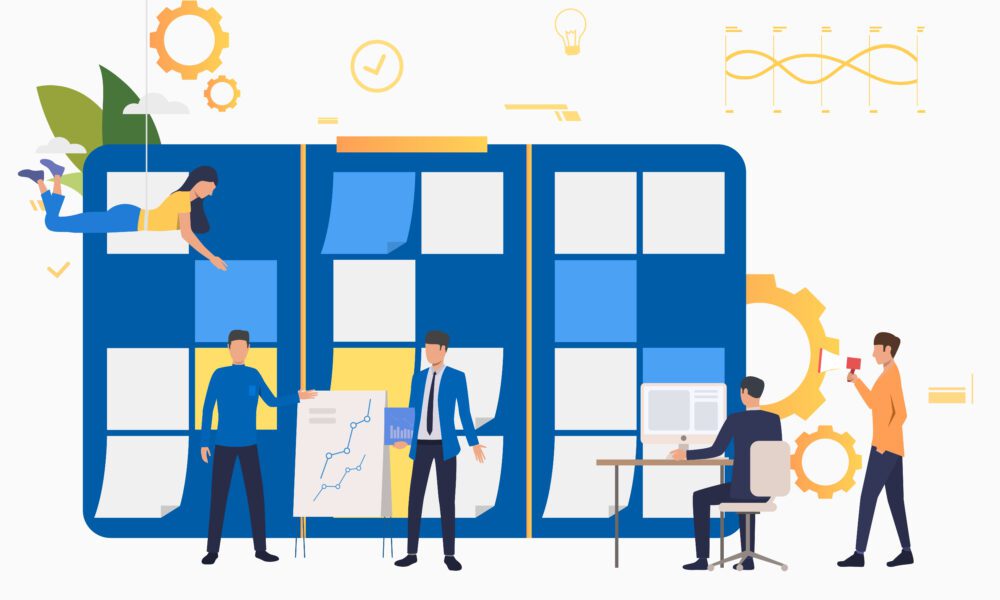The Role of Rapid Prototyping in Agile Product Development Processes

In product development, being agile and responsive is key to success. This is where rapid prototyping becomes a game-changer. It’s a practice that many prototype companies are leveraging to accelerate the design process, allowing for quick iterations and immediate feedback. Explore the critical role rapid prototyping plays in agile product development processes.
Speeds Up the Design Cycle: Revolutionizing Product Development Timelines
Rapid prototyping, particularly through the transformative capabilities of 3D model printing services, offers a groundbreaking solution to expedite the journey from conceptualization to physical realization. This innovative approach drastically reduces the traditional timelines associated with product design, allowing designers to iterate and swiftly refine their ideas in real time. In today’s competitive market landscape, where innovation reigns supreme, the ability to accelerate the design cycle can often mean the difference between seizing market opportunities and lagging behind competitors.
Enhances Flexibility: Empowering Agile Product Development
Agility is the cornerstone of modern product development methodologies, and rapid prototyping catalyzes fostering flexibility and adaptability within development teams. With the capability to swiftly produce prototypes, teams can explore many design options and pivot directions without facing significant setbacks. This inherent flexibility nurtures a creative and innovative development environment, empowering teams to push boundaries, experiment with novel concepts, and unearth groundbreaking solutions that drive product excellence.
Facilitates Better Communication: Transforming Ideas into Tangible Concepts
Communication is the linchpin of successful product development endeavors, and rapid prototyping plays a pivotal role in enhancing this crucial aspect. Unlike traditional 2D drawings or digital models, physical prototypes provide stakeholders with a tangible representation of the product, fostering a shared understanding of its form, function, and features. This enhanced clarity facilitates seamless communication among team members, clients, and investors, streamlining decision-making processes and ensuring alignment of expectations and objectives throughout the development journey.
Reduces Risks and Costs: Early Intervention for Sustainable Success
Identifying and rectifying design flaws or potential issues early in development is paramount for mitigating risks and optimizing resource utilization. Rapid prototyping enables early-stage testing and validation, significantly reducing the likelihood of costly errors and setbacks in later stages of production. By preemptively addressing these challenges, companies can avert the expenses associated with major revisions or extensive rework post-production, safeguarding both time and financial resources.
Improves Customer Involvement: Embracing User-Centric Design Principles
Incorporating customer feedback into product development is essential for creating offerings that resonate with end-users. Rapid prototyping facilitates dynamic involvement from potential customers, enabling developers to solicit feedback, evaluate concepts, and iterate designs swiftly. This direct engagement empowers developers to tailor products to effectively meet user needs and preferences, ensuring a more seamless and satisfactory user experience upon launch.
Encourages Iteration and Continuous Improvement: Embracing the Agile Mindset
The ethos of continuous improvement through iterative refinement is central to the agile methodology. Rapid prototyping epitomizes this philosophy by enabling teams to produce and test multiple product iterations rapidly. Each iteration is a stepping stone toward perfection, refining the product’s design based on real-world testing, feedback, and insights. This iterative approach accelerates the development cycle and nurtures a culture of innovation and excellence within the organization.
Leverages the Latest Technologies: Harnessing Cutting-Edge Tools for Competitive Advantage
Advancements in transformative technologies such as 3D printing have propelled the proliferation of rapid prototyping. Prototype companies specializing in product development prototyping leverage these cutting-edge tools and techniques to deliver high-fidelity prototypes quickly and efficiently. This access to the latest technologies empowers businesses to explore innovative designs, materials, and manufacturing processes that were previously inaccessible. By leveraging these capabilities, organizations can gain a competitive edge in the market, driving innovation and differentiation in their product offerings.
Streamlining Feedback Loops with Rapid Prototyping
In any agile development process, the feedback loop is crucial. Rapid prototyping strengthens this loop, making it faster and more effective. When developers and designers can quickly produce a tangible model of their product, feedback from users and stakeholders can be obtained almost immediately. This instant review and response mechanism allows teams to adjust on the fly, ensuring the product evolves directly to real user needs and preferences. Moreover, it encourages a culture of open communication and collaboration, where every team member’s input is valued and can be seen in the physical iterations of the prototype.
Nurturing Innovation Through Rapid Experimentation
One of the most exciting aspects of rapid prototyping is its capacity to foster innovation. By significantly lowering the time and cost of creating prototypes, teams are encouraged to experiment with bold, unconventional ideas. This environment of rapid experimentation opens up new possibilities for product features, designs, and uses that might not have been considered viable before. It democratizes innovation, allowing every team member to see their ideas come to life and be tested in the real world. This boosts morale and propels the product development process forward, ensuring that the final product is not just a reflection of current market needs but a step ahead, poised to meet future demands.
Enhancing Market Readiness with Agile Prototyping
Rapid prototyping within an agile product development framework significantly accelerates market readiness. By rapidly iterating and refining prototypes, products can achieve a higher level of development before they ever reach the consumer, ensuring that when they do, they’re fully optimized for market success. This approach shortens the time to market and ensures that the product has undergone thorough testing and refinement, minimizing the likelihood of post-launch issues. Additionally, by integrating market feedback at early stages, products are better aligned with consumer expectations and demands, increasing their chances of success. Agile prototyping empowers businesses to stay agile and responsive in development and meet and exceed market expectations, ensuring they remain competitive in the market environment.
Conclusion
Rapid prototyping transforms the product development landscape, making the process faster, more efficient, and more responsive to change. For businesses looking to stay ahead in the agile development race, incorporating rapid prototyping into their strategy is not just an option—it’s a necessity. Partnering with a prototype company that offers comprehensive services, including 3D model printing, can provide the support and expertise needed to leverage this powerful tool to its full potential. In the journey from concept to creation, rapid prototyping is the bridge that turns ideas into reality faster and more effectively than ever before.





